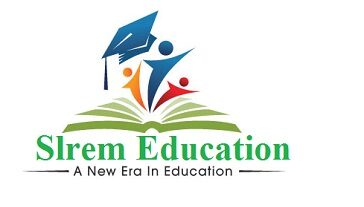In the evolving landscape of education, traditional exams and tests are increasingly being complemented and even replaced by innovative assessment methods. These new approaches aim to provide a more comprehensive and accurate picture of a student’s abilities, skills, and knowledge. This article examines various emerging methods of student assessment that go beyond the conventional means, highlighting their benefits and applications in modern education.
Rethinking Traditional Assessments
The traditional methods of assessing students, primarily through exams and written tests, have been the standard for many years. However, educators and researchers are now recognizing the limitations of these methods in measuring a student’s overall capabilities and learning progress.
Limitations of Traditional Exams
Traditional exams often focus on rote memorization and do not adequately assess critical thinking, problem-solving, and creativity. They can also be stressful for students, which may affect their performance and do not necessarily reflect their true understanding or potential.
The Need for Holistic Assessment
There is a growing consensus on the need for more holistic assessment methods that evaluate a wider range of student skills and competencies, such as the simple transition from Word to PDF. These methods aim to provide a more balanced view of a student’s abilities, including their practical skills, critical thinking, creativity, and collaboration.
Portfolio Assessment
Portfolio assessment is a method where students compile a collection of their work over time, showcasing their learning progress, achievements, and skills development.
Benefits of Portfolio Assessment
Portfolios allow students to demonstrate their learning in a variety of formats, catering to different learning styles. They also encourage reflective learning, as students review and assess their own work.
Implementing Portfolio Assessment
To implement portfolio assessment effectively, educators need to provide clear guidelines on what should be included in the portfolio and how it will be evaluated. Regular feedback and opportunities for reflection are also crucial.
Project-Based Assessment
Project-based assessment involves evaluating students based on projects that they complete over an extended period, often as part of a team.
Emphasis on Practical Skills
This method emphasizes practical skills and real-world application of knowledge. It allows students to engage in complex tasks, often requiring research, problem-solving, and collaboration.
Challenges and Opportunities
While project-based assessment can be more time-consuming and challenging to grade, it offers students the opportunity to develop a range of skills that are highly valued in the workplace.
Peer and Self-Assessment
Peer and self-assessment methods involve students evaluating their own work or that of their peers. This can be done through various formats, such as rating scales, checklists, or written feedback.
Developing Critical Evaluation Skills
These methods help students develop critical evaluation skills and a deeper understanding of the subject. They also encourage students to take greater responsibility for their learning.
Guidelines for Effective Implementation
For peer and self-assessment to be effective, students need clear criteria and training on how to assess work objectively. It is also important to create a supportive environment where students feel comfortable giving and receiving feedback.
Technology-Enhanced Assessment
With the integration of technology in education, various technology-enhanced assessment methods are emerging, offering new ways to evaluate student learning.
Digital Portfolios and Simulations
Digital portfolios and simulations are examples of technology-enhanced assessments. These portfolios allow for the inclusion of multimedia elements, while simulations provide interactive environments for students to demonstrate their skills.
Adaptive Testing
Adaptive testing is a technology-based approach where the difficulty of test questions adjusts based on the student’s responses, providing a more personalized assessment experience.
Formative Assessment
Formative assessment is an ongoing process that involves regularly evaluating student learning to provide immediate feedback and support.
Continuous Feedback and Learning
Unlike summative assessments, which evaluate learning at the end of a unit or course, formative assessments are integrated throughout the learning process, allowing for continuous feedback and adjustments in teaching strategies.
Implementing Formative Assessment
Effective formative assessment requires a shift in the classroom culture, where the focus is on continuous learning and improvement rather than grades. It involves a variety of informal assessment techniques, such as quizzes, discussions, and observational assessments.
Conclusion
The shift towards innovative assessment methods in education reflects a broader understanding of what constitutes effective learning and teaching. By moving beyond traditional exams and tests, educators can provide a more nuanced and comprehensive evaluation of student abilities, catering to diverse learning styles and needs. These methods not only assess academic knowledge but also essential life skills, preparing students more effectively for their future careers and roles in society. As education continues to evolve, so too will the methods we use to assess and understand student learning, paving the way for a more inclusive and effective educational system.






